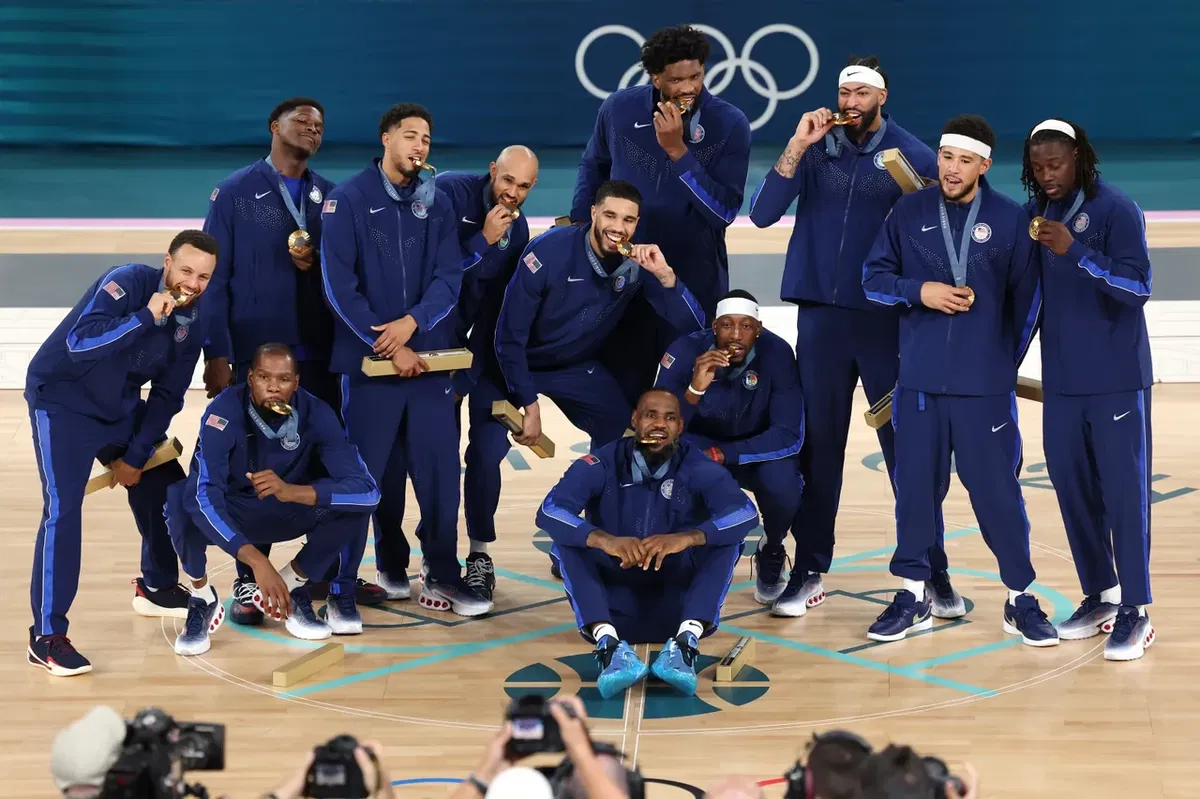

The United States delivered on the big stage once of Olympic men’s basketball again by earning a fifth consecutive gold medal. With LeBron James, Kevin Durant, and Stephen Curry coming together as “The Avengers” coming together to keep USA Basketball at the top, the star-studded roster got the job done while being heavy favorites.
Watch What’s Trending Now!
There was a close call against Serbia in the semifinals, requiring a 17-point comeback to achieve a 95-91 victory, with Curry erupting. Regardless, the United States advanced and took care of business in another close call against France with Curry delivering 24 points and a late dagger shooting over two defenders to seal a 98-87 win, clinching the gold medal.
Throughout the Olympic tournament, much of the roster stepped up for big moments in addition to Curry’s impressive late moments. Durant made a near-perfect return to the lineup with a team-high 23 points against Serbia. Anthony Edwards delivered 26 points and five rebounds against Puerto Rico. Throughout the tournament, James averaged 14.2 points, 8.5 assists, and 6.8 rebounds, including a historic triple-double against Serbia. There was an overwhelming display of talent.
ADVERTISEMENT
As the world gears up for the 2028 Olympic Games in Los Angeles, it surely won’t be as simple without potentially multiple of these iconic tone-setting superstars guiding the group. The United States faces several critical questions as it seeks to maintain its dominance on the global stage.
No LeBron James, but will Kevin Durant or Stephen Curry play in 2028?
LeBron James has already mentioned he doesn’t envision himself playing in the 2028 Los Angeles Olympic Games. Considering he’s already 39, it would be pretty unreasonable to expect a 43-year-old to be playing at that level still even though he’s clearly defied all conventional logic. However, Stephen Curry will be 40 and Kevin Durant will be 39. Surely, they will have the green light to play if they want to, but their health and desire to do so will be something to monitor.
ADVERTISEMENT
As ESPN’s Brian Windhorst reported on “The Hoop Collective” podcast, Durant would likely have a “provisional yes” from USA Basketball to play in 2028 if he desires to do so. After becoming the first men’s basketball player to win four gold medals and remaining committed to playing in 2016 and 2021 when some NBA superstars elected to bypass it, it’s difficult to envision it not being up to Durant. When asked if he’d play in 2028, Durant replied: “Who knows, man. We’ll see.”
ADVERTISEMENT
Given how impactful Durant always proves to be in whatever setting he’s competing, whether it’s the NBA or FIBA, he should factor in as an important talent regardless of who else is on the team. If he chooses not to play, it’d be understandable as well. He remains a name to watch.
ADVERTISEMENT
Curry hinted that he is grateful for his experience with Team USA this time since it could be his last opportunity to do it. “This might not come around again,” he mentioned. “It was very, very special.”
Top Stories
Marina Mabrey Is Raising Eyebrows Again With Fiery Unrivaled Confrontation
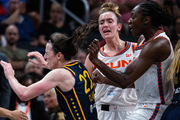
Kyrie Irving Breaks Silence After Injury Return Update Emerges
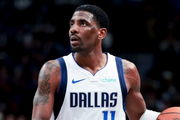
Is Anthony Davis Playing Tonight? Mavericks vs Kings Latest Injury Report (Jan 6)
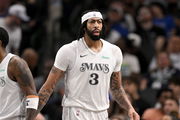
Unrivaled Commissioner Makes His Opinion on Paige Bueckers Very Clear
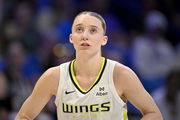
Napheesa Collier Gives WNBA Fans Good Reason To Be Excited About Delayed CBA Conversations
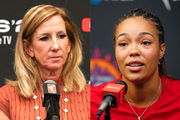
Beyond Durant and Curry, there are other superstars to keep an eye on, including Joel Embiid, who made his FIBA debut by representing the United States.
ADVERTISEMENT
Will Joel Embiid try to play for Cameroon?
It was a unique set of circumstances for Joel Embiid during the Paris Olympics. He turned down joining the national team for France and Cameroon in favor of playing for the United States. The decision remained controversial as he stepped foot on French soil, being met by boos from fans, whether he was getting off the train or in uniform at the arena. There’s a possibility he switches national teams and plays the villain role against the host nation twice in a row.
Embiid will be 34 during the next Olympic Games, but he expressed interest in potentially playing for his native country of Cameroon next time instead of the United States, saying, “That’s one thing I’ll say being gone for a few weeks away from family, away from home. But then again, I think being with Team USA, the group of guys that we have, the people around has made it easy to just enjoy it,” he explained. “And then Paris is a great city too, and then the next one is in LA. We’ll see. I don’t know, maybe it might not be with Team USA, maybe it might be with Cameroon, so we’ll see.”
ADVERTISEMENT

In fairness to Embiid, he did ay he wanted to play for Cameroon but since they did not qualify for the Olympics, his choice for 2024 came down to either the United States or France. “Having lived half of my life in the U.S. and the other half in my country, Cameroon, it just looked like it was, you could go two ways,” Embiid explained. “And I always said from the beginning, everybody knew that if Cameroon would’ve qualified [for the Olympics], that would’ve never been a choice [to play for anyone but Cameroon].”
ADVERTISEMENT
Embiid felt more comfortable playing for the United States than France, hinting there was a greater sense of comfort with his American NBA peers. “It was a tough decision, but it is all about comfort level, and like I said, I’ve known these guys (Team USA players) for a long time and I just felt more comfortable than on the other side (France),” Embiid said.“There was some concern with the other side. Comfort level was huge. I always say I’m going to be where I’m wanted and these guys wanted me.”
There is a lengthy process required for Embiid to be released from USA Basketball before joining another national team like Cameroon. He would need to not compete for the United States for at least three years, which means he’d have to sit out of the 2027 FIBA World Cup. He would then need FIBA and USA Basketball to approve of his decision while having Cameroon’s interest.
For now, it’d be difficult to consider Embiid a candidate for Team USA until there is more clarity provided about his situation. It’s also more challenging for a seven-footer with an injury history to continue to compete internationally in addition to the NBA season the deeper they get into their 30s. With the Olympics beginning in mid-July 2028, it could become challenging for players from countries that did not qualify using the FIBA World Cup since the pre-Olympic qualifying tournament would need to happen earlier than it did this summer.
ADVERTISEMENT
For example, Luka Dončić guided the Dallas Mavericks to the NBA Finals and had 15 days between Game 5 of the series and having to suit up for Slovenia in Piraeus to attempt to guide the national team to qualify for the Paris Olympics. His team was unable to breakthrough. The point being, this was held July 2-7 and he had minimal time and men’s basketball at the Olympics began on July 27. How quick of a turnaround will the timeline be for teams needing to compete to qualify next time? A lengthy NBA postseason run could make the decision complicated for a superstar.
What is Jayson Tatum’s future with Team USA?
Despite the success the United States achieved throughout the Olympics before winning the gold medal, Jayson Tatum’s limited playing time became a significant focus that he described as a “tough personal experience.” Despite how the situation played out, he clarified that he’s not going to allow that to impact his decision-making for 2028.
“It was a tough personal experience on the court, but I’m not going to make any decision off emotions,” Tatum said. “If you asked me right now if I was going to play in 2028 — it is four years from now and I [would have] to take time and think about that. So I’m not going to make any decision based off how this experience was or how I felt individually.”
Tatum, coming off an All-NBA First-Team season, is already one of the league’s best players. Without LeBron James being unlikely to play the fourth spot for Team USA next time, there should be plenty of more minutes available for Tatum. If Kevin Durant doesn’t play, that’s only further the case.
Who are the top candidates to return to Team USA?
It’s too early to have a great read on whether Kevin Durant or Stephen Curry will return to Team USA, but regardless, there are plenty of names that appear to be viable candidates to play again.
Young talents like Anthony Edwards, Devin Booker, and Bam Adebayo, who played regular roles and had some shining moments at the Olympics, appear to be clear candidates to return. Jayson Tatum and Tyrese Haliburton often watched from the bench but should have a clearer pathway to meaningful minutes next time, making them logical options as well.
At the start of the next Olympics, Anthony Davis will be 35, but he has reportedly expressed his desire to play for the United States again. According to Windhorst, he’s already expressed his desire to play in 2028, saying, “I’m going to be there for LA.”
Other names that could age out are Jrue Holiday and Derrick White. Holiday will be 38 and it’s difficult to envision a role player being brought back at that age. White will be 34 and there could be better options to choose from on the younger side by the next Olympics.
Who will play at the 2027 FIBA World Cup?
The conversation about how the rest of the world has caught up to the United States was sparked by the disappointing showing produced at the FIBA World Cup last year. With “The Avengers” gearing up for the Paris Olympics but otherwise sitting out, it was up to a new group of younger stars to try to beat other nation’s best groups.
Anthony Edwards is one of the young rising talents on Team USA but has already exclaimed, “Hell no!” when asked if he would play at the 2027 World Cup in Qatar. Even Jayson Tatum already bypassed the opportunity and the appeal is only weakened over time. Aside from superstars Nikola Jokić and Giannis Antetokounmpo, rival national teams tend to have their best players available for the World Cup.
At a minimum, the Americans need to come away from the World Cup with qualification for the Olympics. There are only two teams from the Americas that can earn such an outcome. While Canada has a talented and continually improving group, there doesn’t appear to be another looming threat in the Americas to stifle achieving this mark.
Regardless, while other nations gain valuable reps in high-stakes competition using the World Cup, the United States tends to come back the following summer with a completely different team for the Olympics. With how talented rival national teams continue to become, will it eventually catch up to the Americans that the team doesn’t follow suit? A lot of that will be determined by who commits to play or the Olympic roster and how the pieces fit.
Who could be a new addition to the 2028 Olympics?
A lot can change before 2028, but if we’re looking at it now, there are already a few names that stand out as viable options for the United States to consider. Some of these players could have been intriguing options for 2024, which made it far from being free from controversy.
The exclusion of Jaylen Brown sparked controversy, but Grant Hill did not rule out the possibility of selecting him next time. A tough wing player who embraces guarding the best perimeter player while being a disrupter on that end brings a lot of value. He’s improved as a shooter and as a scorer throughout his career to the point that his overall impact earned an Eastern Conference Finals MVP and NBA Finals MVP. This is an easy choice without LeBron James and potentially Kevin Durant. Other wing options that were in the player pool include Mikal Bridges, Scottie Barnes, Desmond Bane, Aaron Gordon, Josh Hart, and Brandon Ingram. Perhaps, other names like Brandon Miller and Jalen Williams will also be on the list.

Reuters
Paris 2024 Olympics – Basketball – Men’s Victory Ceremony – Bercy Arena, Paris, France – August 10, 2024. Gold medallists Lebron James of United States, Tyrese Haliburton of United States, and Jayson Tatum of United States pose with their medals. REUTERS/Evelyn Hockstein
Depending on Stephen Curry’s potential status and the overall structure of the roster, if some offensive firepower is needed in the backcourt, there are a few dynamic guards that stand out as options including Jalen Brunson, Ja Morant, Donovan Mitchell, or Tyrese Maxey. Obviously, it’s unlikely that four guards would be necessary by that time. Perhaps other players to keep in mind are Trae Young, De’Aaron Fox, Cade Cunningham, and Darius Garland, to name a few. Making the cut as a guard is very challenging with how saturated the position group is. Even Kyrie Irving, who was a former gold medalist and World Cup MVP, wasn’t given much consideration.
The United States experienced the benefit of having the overpowering presence of James at the power-forward spot. He was overwhelming for opposing teams to handle, allowing him to use his combination of size, power, and athleticism to get where he wanted when he needed or attract significant defensive attention to the point that it freed up his teammates. A few players who could relatively emulate some of this concept include Paolo Banchero and Zion Williamson.
As reported by The Athletic’s Joe Vardon, Banchero actually received “serious consideration” for this year’s Olympic squad, but remains a player Grant Hill “wants to feature” in the future. He already showed his commitment to USA Basketball by spurning Italy to play for the United States in the 2023 FIBA World Cup.
If Joel Embiid is unlikely to be in the mix for 2028, the United States must find a versatile talent at the center position. Chet Holmgren stands out as a frontcourt talent to fit this need. However, if additional names are needed in the event another veteran doesn’t play like Anthony Davis, some options could include Jalen Duren, Jarrett Allen, Dereck Lively II, or Walker Kessler, among others. There are plenty of rim protection options with interior play finishing skills to consider.
More players capable of bringing defensive versatility in the frontcourt include Jaren Jackson Jr. and Jabari Smith Jr. It seems as though a lot will depend on the vision for the playing style the United States wants to deploy in 2028. If switching options that can space the floor are preferred over more physical and capable offensive threats, these two names make a lot of sense.
Tyrese Haliburton and Anthony Edwards were the only players under 25 who made the final cut for this year’s Olympic team. With that being said, keep in mind that Cooper Flagg will only be 21 when the 2028 Olympics occur. Perhaps he will be such a dynamic talent early in his career that he will defy conventional wisdom. It’s too early to put heavy stock into that or to rule it out.
Again, a lot can change around the NBA from now until the 2028 Olympics. There tends to be big-name players who sit out after a lengthy postseason run, opening up a spot for someone else. Other times, injuries can derail the trajectory of someone’s career, or at least sideline them for the particular summer the Olympics are held.
Naturally, a lot of attention is internal about who will play for Team USA in the future, but the growing competitive landscape deserves a healthy respect as well as the United States seeks to contend for a sixth consecutive gold medal in 2028.
Who will become Team USA’s biggest threat?
The United States has faced France in the gold medal game twice in a row and with Victor Wembanyama along with plenty of young up-and-coming French talent, there appears to be a clear threat in 2028. He finished with 26 points and 7 rebounds while shooting 11 of 19 overall and 3 of 8 from deep. He was one-point shy of tying the record for the highest-scoring performance against the United States in the gold medal game despite being only 20.
It remains to be seen what they will become in their careers, but Zachary Risacher was one of the top two picks in this year’s NBA Draft, while Tidjane Salaun went No. 6 overall. It was the first time a country outside of the United States had three top-10 picks in the same draft class after already having Bilal Coulibaly as the No. 7 overall pick in 2023. Another standout name to watch in the 2025 NBA Draft is Nolan Traore, who currently projects as being a fringe top-five pick. Overall, more perimeter skill is needed to make it easier on Wembanyama.

Germany has carried the same core for years and will continue to be a threat with names like Dennis Schröder and Franz Wagner headlining the roster. Wagner, in particular, should only continue to grow in his career. It will be fascinating to see if other German talents will be welcomed in the fold, primarily Isaiah Hartenstein given Maxi Kleber’s age. Regardless, the team should remain a well-oiled machine despite Gordon Herbert stepping away as head coach.
Canada should have a more formidable team in 2028 with plenty of its young talents being options to roster, including 7-foot-4 Zach Edey. There was a clear lack of an imposing interior presence with Dwight Powell and Kelly Olynyk as primary center options. Having a legitimate rim protector would make a significant difference, particularly with such aggressive on-ball defenders like Dillon Brooks and Luguentz Dort on the perimeter. It would help significantly to have more size at the four spot. A few names that stand out to watch could include Leonard Miller or Brandon Clarke.
The future of Canada’s perimeter firepower next to Shai Gilgeous-Alexander remains an interesting element to consider. Jamal Murray is underwhelmed but will only be 31 by the next Olympics. SGA, R.J. Barrett, and Andrew Nembhard will each be under 30 next time as well. Shaedon Sharpe, at 6-foot-6, possesses off-the-charts explosiveness and could present another electrifying presence. Oh! we cannot forget about Bennedict Mathurin either.
Since Nikola Jokić will be 33, Serbia naturally remains a team to hold a healthy respect for as well. The team won an Olympic bronze medal in Paris and previously had won silver in 2016. While many of the team’s core players are already in the 29-31 range for age, the team already has NBA talents like Nikola Topić and Nikola Jović who could develop into true difference-making players. It’s usually safe to count on young talent emerging for Serbia given the success typically achieved in the U19 and under levels.
If additional dark-horse teams had to be considered, it usually is best to begin with the countries with some of the top players in the world. For example, Luka Dončić and Giannis Antetokounmpo are such a powerful threat individually, they just need a certain level of talent around them to be some level of a threat. Slovenia failed to qualify for the Olympics after losing to Greece in the qualifying tournament in Piraeus. Greece was eliminated in the quarterfinals in Paris and faces limited talent in the supporting cast around Antetokounmpo with many of the current core role players aging out. However, there is some time for talent to develop for both countries ahead of the next Olympics.
Dončić nearly Slovenia to the gold medal game in Tokyo before losing 90-89 with the game coming down to the wire. The group went on to lose to Australia in the bronze medal game with Patty Mills having a historic 42-point outburst. Slovenia is currently in a transitional period after losing Goran Dragić to retirement, facing the need for young talent to step up next to Dončić. The center position has often been the focus of the one naturalized roster spot for this federation, between Mike Tobey and Josh Nebo. However, a more dynamic option is needed. Regardless, it would be a tall task for Slovenia to roster sufficient talent to challenge the United States but could be a major headache to try to contain Dončić.
As it stands, the United States should have enough talent to win another gold medal in 2028.
ADVERTISEMENT
ADVERTISEMENT
ADVERTISEMENT

